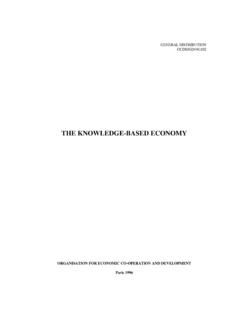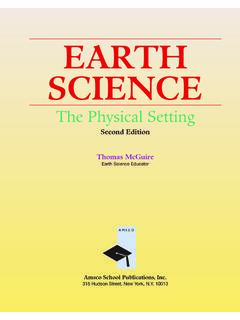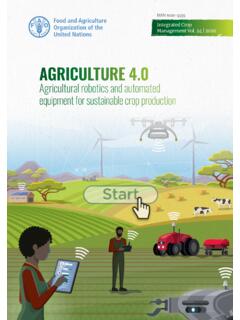Transcription of Hooked: By Nir Eyal - passionatethinker.com
1 Hooked: How to Build Habit-Forming Products By Nir Eyalwith Ryan Hoover Copyright 2014 Nir EyalAll rights : 1494277530 ISBN-13: 978-1494277536 Library of Congress Control Number: 2014900549v For Julie TABLE OF CONTENTSI ntroduction1. The Habit Zone2. Trigger3. Action4. Variable Reward5. Investment6. What Are You Going To Do With This?7. Case Study: The Bible App8. Habit Testing and Where To Look For Habit-FormingOpportunitiesAppendixAbout the AuthorsAcknowledgementsContributorsNotes and Sources Note: Some sections of this book have appeared in articles previously published by the author. INTRODUCTION 79 percent of smartphone owners check their device within 15 minutes ofwaking up every morning.[i] Perhaps more startling, fully one-third ofAmericans say they would rather give up sex than lose their cell phones.
2 [ii]A 2011 university study suggested people check their phones 34 times perday.[iii] However, industry insiders believe that number is closer to anastounding 150 daily sessions.[iv]Face it, we re technologies we use have turned into compulsions, if not full-fledgedaddictions. It s the impulse to check a message notification. It s the pull tovisit YouTube, Facebook, or Twitter for just a few minutes, only to findyourself still tapping and scrolling an hour later. It s the urge you likely feelthroughout your day but hardly psychologists define habits as, automatic behaviors triggered bysituational cues: things we do with little or no conscious thought.[v] Theproducts and services we use habitually alter our everyday behavior, just astheir designers intended.
3 [vi] Our actions have been do companies, producing little more than bits of code displayed on ascreen, seemingly control users minds? What makes some products so habit-forming?For many products, forming habits is an imperative for survival. As infinitedistractions compete for our attention, companies are learning to master noveltactics to stay relevant in users minds. Today, amassing millions of users isno longer good enough. Companies increasingly find that their economicvalue is a function of the strength of the habits they create. In order to win theloyalty of their users and create a product that s regularly used, companiesmust learn not only what compels users to click, but also what makes some companies are just waking up to this new reality, others arealready cashing in.
4 By mastering habit-forming product design, the companiesprofiled in this book make their goods indispensable. First-To-Mind WinsCompanies who form strong user habits enjoy several benefits to their bottomline. These companies attach their product to internal triggers. As a result,users show up without any external of relying on expensive marketing, habit-forming companies linktheir services to the users daily routines and emotions.[vii] A habit is at workwhen users feel a tad bored and instantly open Twitter. They feel a pang ofloneliness and before rational thought occurs, they are scrolling through theirFacebook feeds. A question comes to mind and before searching their brains,they query Google. The first-to-mind solution wins.
5 In chapter one, this bookexplores the competitive advantages of habit-forming do products create habits? The answer: They manufacture fans of the television show Mad Men are familiar with how the adindustry once created consumer desire during Madison Avenue s golden era,those days are long gone. A multi-screen world of ad-wary consumers hasrendered Don Draper s big budget brainwashing useless to all but the , small startup teams can profoundly change behavior by guidingusers through a series of experiences I call hooks. The more often users runthrough these hooks, the more likely they are to form habits. How I Got HookedIn 2008, I was among a team of Stanford MBAs starting a company backedby some of the brightest investors in Silicon Valley.
6 Our mission was to builda platform for placing advertising into the booming world of online companies were making billions of dollars selling virtual cows ondigital farms while advertisers were spending huge sums of money toinfluence people to buy whatever they were peddling. I admit I didn t get it atfirst and found myself standing at the water s edge wondering, How do theydo it? At the intersection of these two industries dependent on mind manipulation,I embarked upon a journey to learn how products change our actions and, attimes, create compulsions. How did these companies engineer user behavior?What were the moral implications of building potentially addictive products?Most importantly, could the same forces that made these experiences socompelling also be used to build products to improve people s lives?
7 Where could I find the blueprints for forming habits? To mydisappointment, I found no guide. Businesses skilled in behavior designguarded their secrets and although I uncovered books, white papers, and blogposts tangentially related to the topic, there was no how-to manual forbuilding habit-forming began documenting my observations of hundreds of companies to uncoverpatterns in user experience designs and functionality. Although every businesshad its unique flavor, I sought to identify the commonalities behind thewinners and understand what was missing among the looked for insights from academia: drawing upon consumer psychology,human-computer interaction, and behavioral economics research.
8 In 2011, Ibegan sharing what I learned and started working as a consultant to a host ofSilicon Valley companies, from small startups to Fortune 500 client provided an opportunity to test my theories, draw new insights,and refine my thinking. I began blogging about what I learned and my essays were syndicated to other sites. Soon, readersbegan writing in with their own observations and the fall of 2012, Dr. Baba Shiv and I designed and taught a class at theStanford Graduate School of Business on the science of influencing humanbehavior. The next year, I partnered with Dr. Steph Habif to teach a similarcourse at the Hasso Plattner Institute of years of distilled research and real-world experience resulted in thecreation of the Hook Model: a four-phase process companies use to formshabits.
9 Through consecutive hook cycles, successful products reach theirultimate goal of unprompted user engagement, bringing users back repeatedly,without depending on costly advertising or aggressive I draw many examples from technology companies given myindustry background, hooks are everywhere in apps, sports, movies,games, and even our jobs. Hooks can be found in virtually any experience thatburrows into our minds (and often our wallets). The four steps of the HookModel provide the framework for the chapters of this Hook Model1. TriggerA trigger is the actuator of behavior the spark plug in the engine. Triggerscome in two types: external and internal.[viii] Habit-forming products start byalerting users with external triggers like an email, a website link, or the appicon on a example, suppose Barbra, a young woman in Pennsylvania, happens tosee a photo in her Facebook newsfeed taken by a family member from a ruralpart of the state.
10 It s a lovely picture and since she is planning a trip there withher brother Johnny, the external trigger s call-to-action intrigues her and sheclicks. By cycling through successive hooks, users begin to form associationswith internal triggers, which attach to existing behaviors and users start to automatically cue their next behavior, the new habitbecomes part of their everyday routine. Over time, Barbra associatesFacebook with her need for social connection. Chapter two explores externaland internal triggers, answering the question of how product designersdetermine which triggers are most effective. 2. ActionFollowing the trigger comes the action: the behavior done in anticipation of areward. The simple action of clicking on the interesting picture in hernewsfeed takes Barbra to a website called Pinterest, a pinboard-style photo-sharing site.



